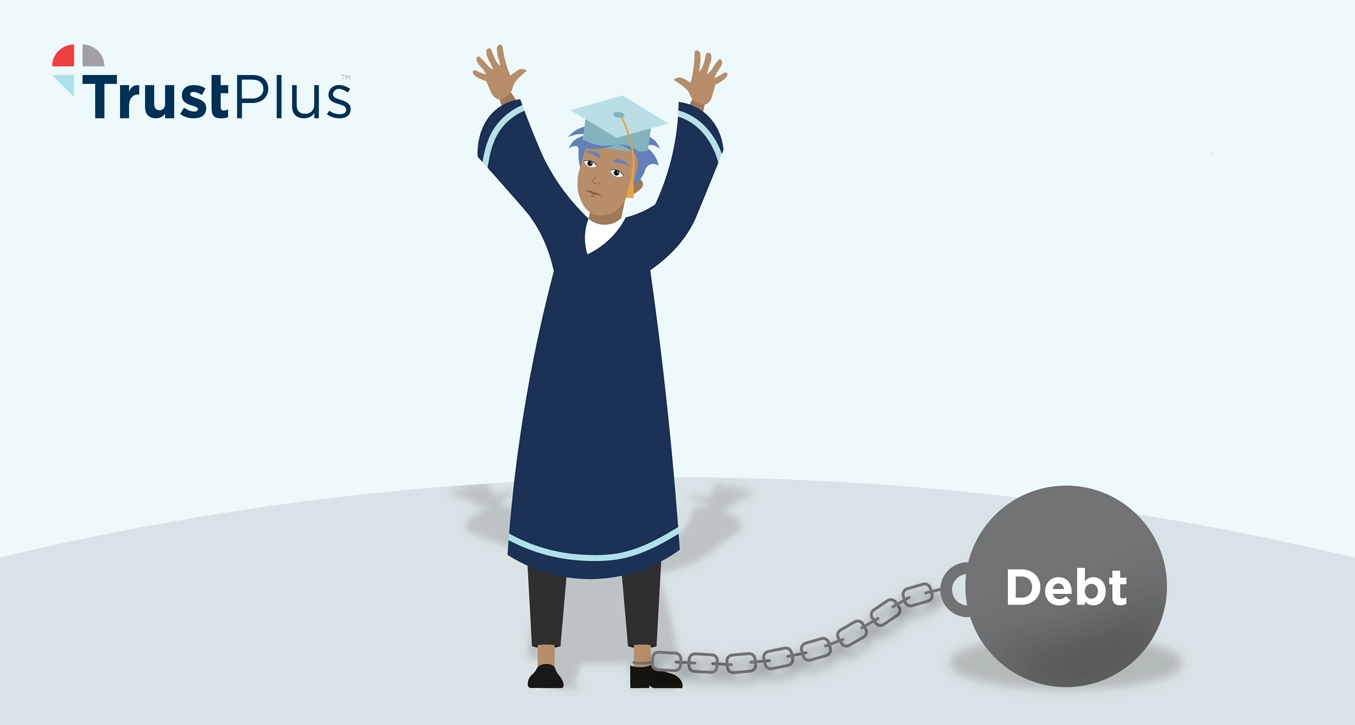17 Jan Student loan forgiveness: What employers should know, now
Federal student loan forgiveness purgatory trapped millions of workers. They now have a way out, following updated guidance last week from the U.S. Department of Education. The time to act is now, before forgiveness becomes history. Borrowers in SAVE should look into switching to another one of the Income-Driven Repayment plans and expect to make loan payments in 2025.

Federal student loan forgiveness alert for employers:
Now is a good time to check-in with workers who have federal student loans.
Millions of workers have been trapped in federal student loan forgiveness purgatory since August.
Following updated guidance last week from the U.S. Department of Education, they now have a way out:
“Specifically, processing has resumed for borrowers’ applications to enroll in the IBR, ICR, and PAYE Plans. Servicers will also process applications for recalculations for IBR, ICR, and PAYE.”
Or Income-Based Repayment, Income-Contingent Repayment, and Pay as You Earn for the uninitiated.
Processing for these Income-Driven Repayment (IDR) plans was paused last summer because of a court order challenging the legality of SAVE, the newest IDR.
8 million borrowers who enrolled in the SAVE plan were automatically placed in forbearance.
During the ongoing forbearance no payments have been required and no interest is accruing on loan balances.
BUT the period does not count toward student loan forgiveness under IDR plans or Public Student Loan Forgiveness, robbing millions of workers of their most precious resource: time, free from the financial stress of student loans.
Financial stress that has health, money, and performance costs for employers and employees alike.
Enroll in an Income-Driven Repayment plan, now
SAVE borrowers should enroll in the resumed Income-Driven Repayment plans immediately, as you could be grandfathered in if (when) plans change under the new administration, suggests Bridget Haile, chief customer officer at Summer, a Certified B Corporation which helps employers provide student loan retirement matching and tuition assistance.
Borrowers may apply for different income-driven repayment (IDR) plans and/or to consolidate loans by using the online applications Income-Driven Repayment (IDR) Plan Application and Loan Consolidation Application.
But beware for traps!
Traps can screw you over, er, there are nuances to be aware of as you examine your options.
For example, John enrolls in an IBR Plan and then moves to a different repayment plan.
Accrued and unpaid interest will capitalize (be added to the principal balance).
Egad!
John (all workers) would benefit from a personal financial coach who understands the hilarious-if-it wasn’t-tragic labyrinth that is federal student loan forgiveness.
Is federal student loan forgiveness about to become history?
Federal student loan forgiveness could be a thing of the past.
SAVE is likely toast, via federal judges or legislators, along with all IDR plans subject to the outcome of the 8th Circuit Court’s decision, which is not expected to favor SAVE.
But the decision is not likely to be rendered before January 20, when the incoming administration could settle with the states, anyway, ending the lawsuits.
Further, the Congressional majority is expected to pursue the College Cost Reduction Act (CCRA), which would eliminate all Income-Driven Repayment plans including SAVE.
CCRA replaces them with a single plan which increases student loan payments, protects less income, requires all borrowers to pay 10 percent of discretionary income monthly, and eliminates entirely time-based forgiveness.
Regardless of whether SAVE survives, borrowers in SAVE should look into switching to another one of the IDR plans and expect to make loan payments in 2025.
They should budget accordingly, verify their contact information with their loan servicer, and remember that late student loan payments can again hurt their credit scores.
Employer student loan retirement match in 2025
The employer student loan retirement match, a provision in Secure 2.0, allows employers to match student loan payments as 401k contributions.
Greg Iacurci of CNBC reports more than 100 companies have implemented the benefit to date, covering almost 1.5 million eligible employees, according to data from Fidelity, the nation’s largest 401(k) plan administrator.
They include “some of the largest firms in the U.S.,” such as Kraft, Workday and News Corp., Jesse Moore, senior vice president and head of student debt at Fidelity, tells Iarcurci via e-mail.
Iacurci reports about 5% of employers have already added the benefit, citing survey results from Alight, one of the largest U.S. retirement plan administrators.
An additional 12% of employers say they are “very likely” to adopt it in 2025, while 29% are “moderately likely” to do so.
But 55% of employers say they are “not at all likely” to add the provision in 2025.
While there are myriad legitimate reasons why employers may not want to implement the student loan retirement match, “it’s something you should definitely consider,” says Ellen Lander, founder of Renaissance Benefit Advisors Group, per Iarcurci.
Looking at the federal student loan forgiveness horizon, borrowers will need all of the help they can get.
“I haven’t heard from clients about student loans for a while,” says TrustPlus Senior Financial Coach Bernard Saavedra. “A few are confused, unaware of payments restarting, used to not making payments.”
“I hear client frustration about having to fit student loan payments back into their budgets,” adds TrustPlus Senior Financial Coach Denae Hannah.

